“Nature is not a place to visit. It is home.” – Gary Snyder
Categorised as critically endangered, the Eastern Low-Land Gorillas —also known as Grauer’s gorilla—are the largest of the four gorilla subspecies. It differs from other gorillas by its stocky body, large hands and short muzzle. Like other gorilla subspecies, eastern lowland gorillas mainly consume fruit and other herbaceous materials. It is pertinent to emphasis that the Low-Land Gorillas are the largest of all apes, be it other gorillas, chimpanzees, bonobos, orangutans or humans.
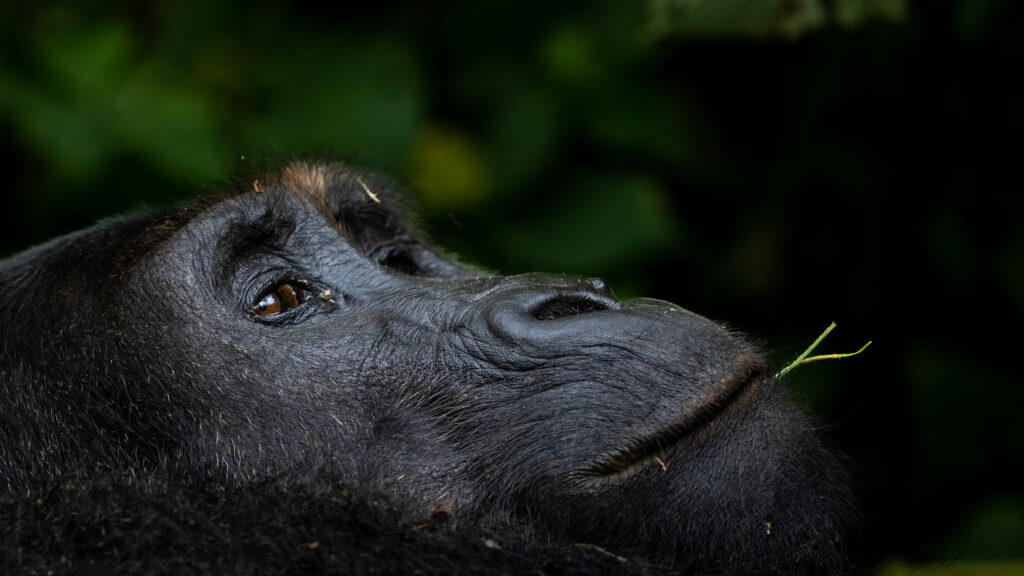
Scientific name Gorilla beringei graueri, the eastern low-land gorillas differ from the mountain gorillas in many subtle ways – shorter muzzle, hair and teeth, and longer arms. The main difference is the length, density and colour of body hair, which is higher in Mountain gorillas. I saw the mountain gorillas in Bwindi, Uganda in the Impenetrable National Park last year, but it is not easy to recollect and compare the differences, hence, banking on the pictures below to compare and highlight the differences.
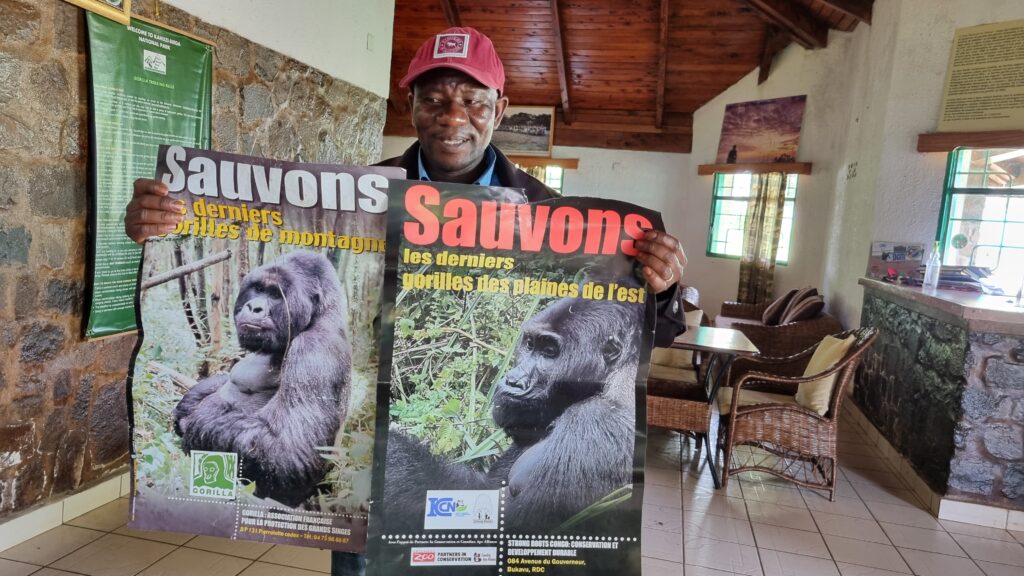
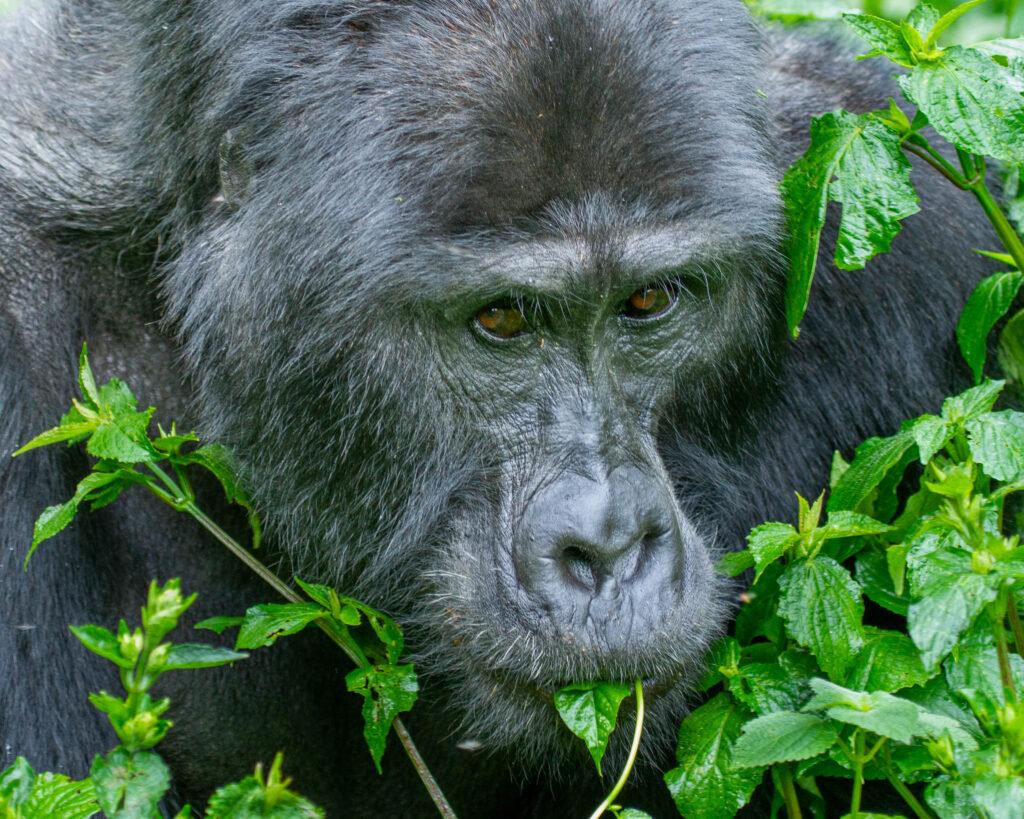
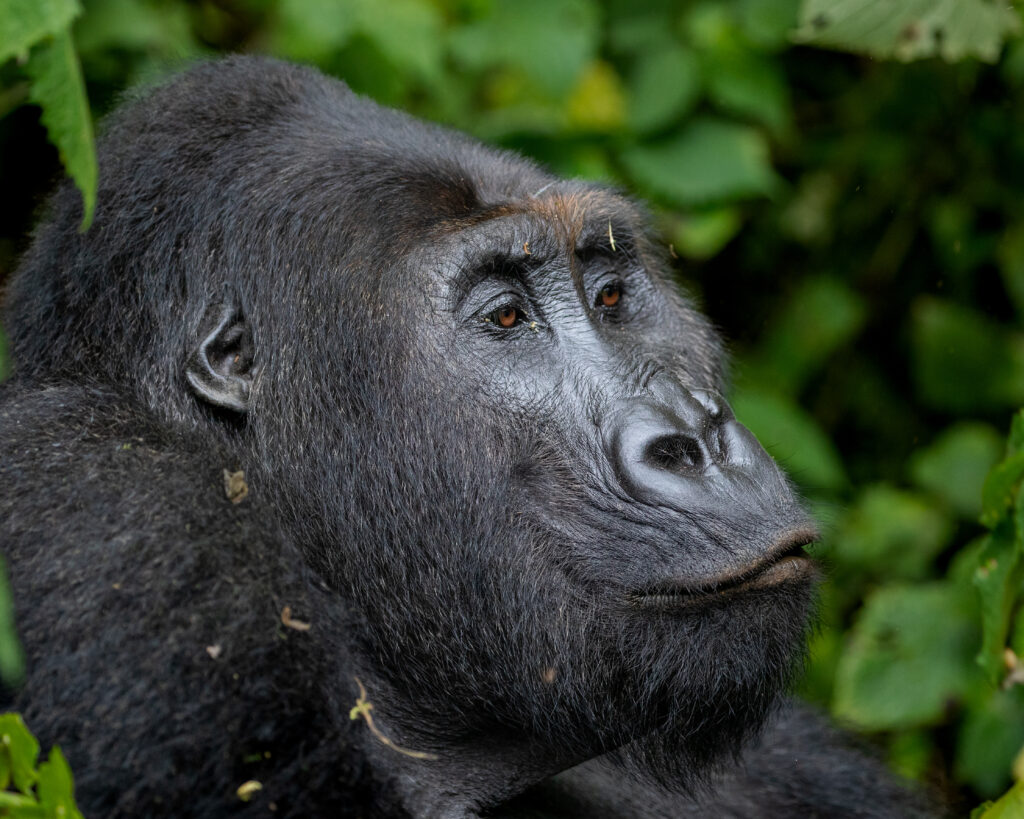
The eastern lowland gorilla occurs in the lowland and Albertine Rift montane forests of eastern Democratic Republic of the Congo (DRC). Until the mid-1990s, the population was thought to number around 17,000 individuals. But the latest survey suggest that numbers had crashed to less than 4,000.
Some studies suggests that eastern lowland gorillas occupy only 13% of their former geographic range.
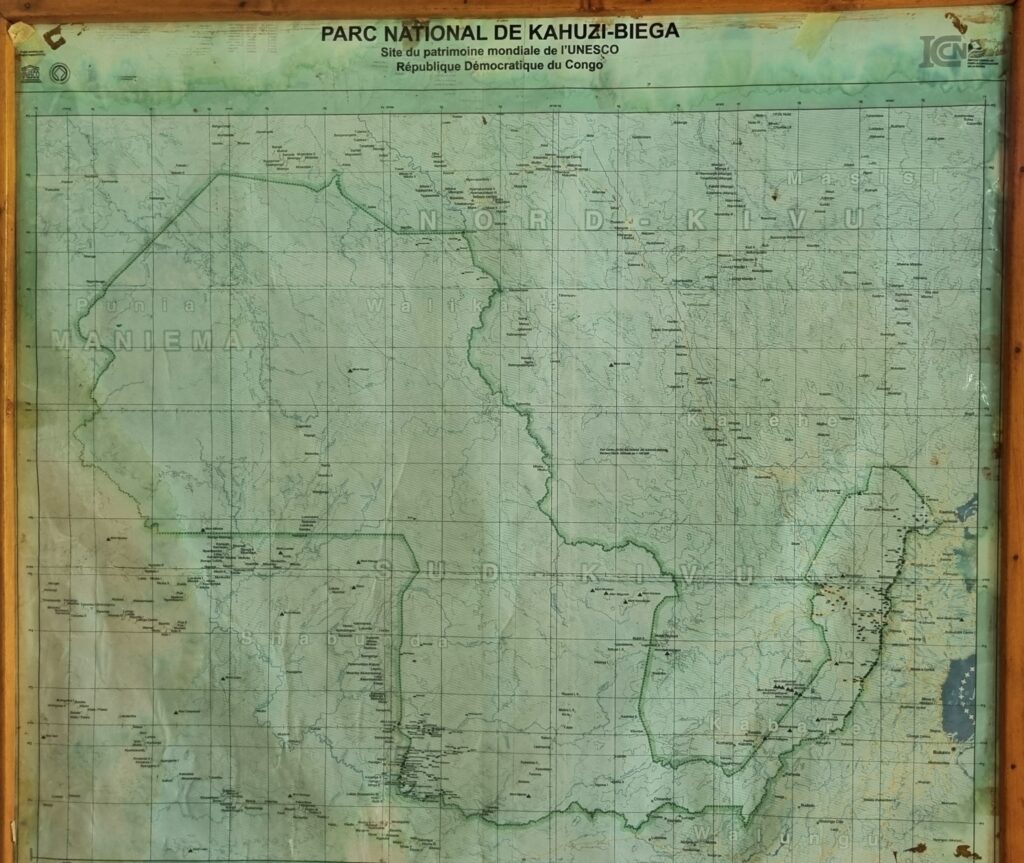
Main reasons of the decline in populations and range – Poaching for bushmeat, body parts and as pets (Just for reference for the brave-hearts as you may feel upset on seeing / reading some accounts here). War and diseases (Ebola) have played their roles as catalysts. Ultimately, it is the uncontrolled greed and shortsightedness of us humans which is pushing these gentle giants towards extinction.
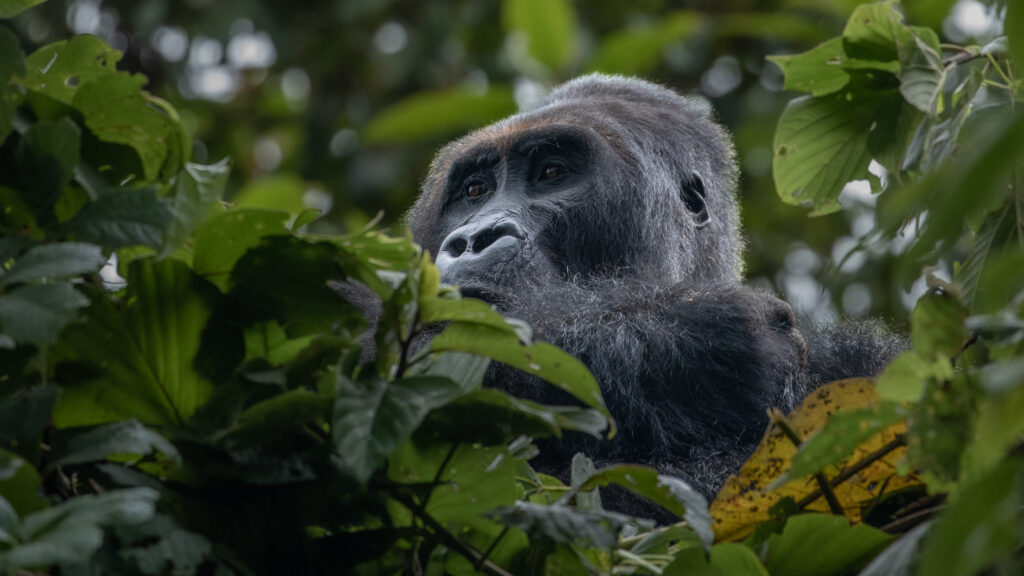
Their main habitat is Kahuzi Biega National Park near Bukavu in DR Congo. However, due to the intermittent conflicts in the region combined with mining (for coltan and other precious minerals) and poaching exerts continued pressure on the gorilla families living in this area – which is the only (last) natural habitat of the eastern low-land gorillas in the entire world.
To go to Bukavu, I took a speed boat (Ihusi express) from Goma. The trip over lake Kivu took 3 hours. Next day, left Bukavu at 0615 h to reach the Office of Kahuzi Biega National Park (30 kms) by 0745 h.
A nice place with good infrastructure and very hospitable manager and staff. However, lack of tourism is quite evident compared to Bwindi (in Uganda).
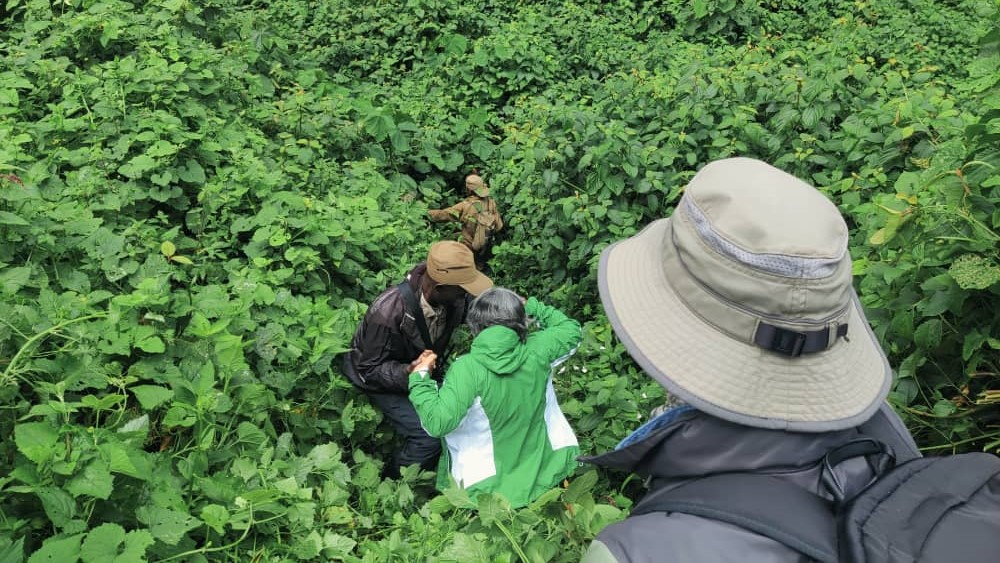
Our tracking commenced at about 0915 h when the main guide Lembert and two rangers accompanied us to a drop off point about 15 minutes drive from the HQ. It was the beginning of a one hour trek into the rain forest, with thickest of the undergrowth beyond my imagination.
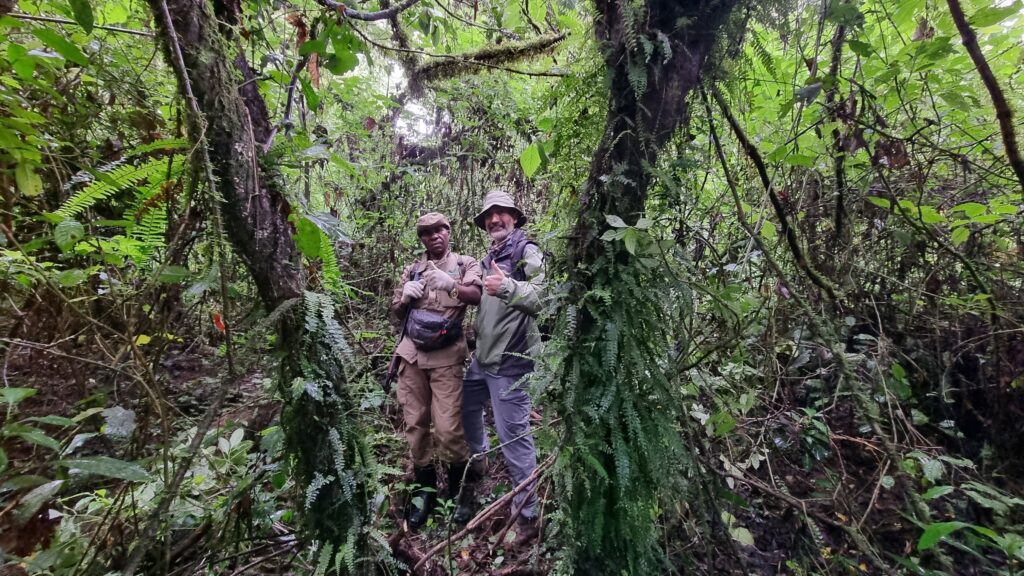
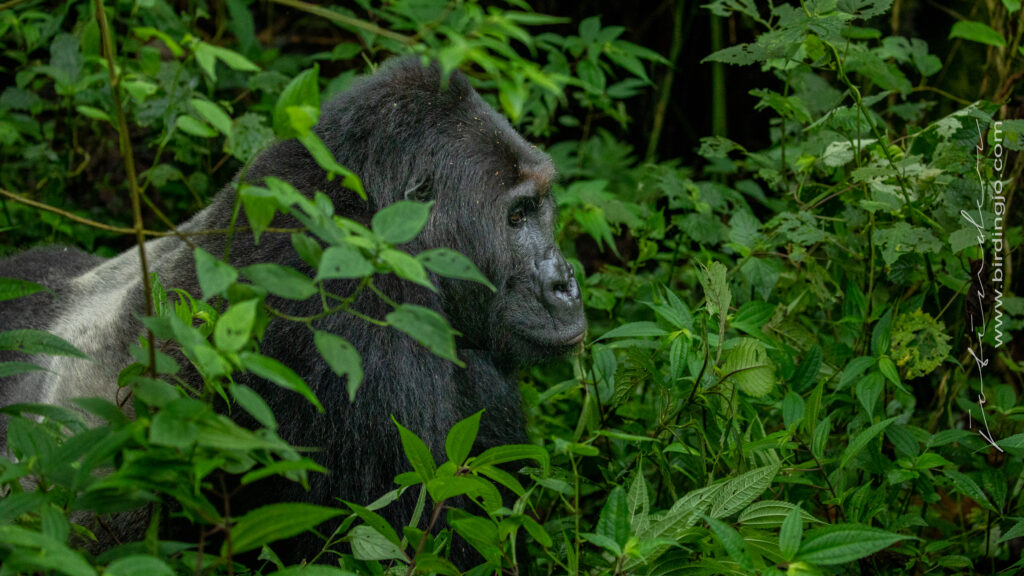
After about one hour of jungle bashing, few skids, slips, bruises and mosquito bites, we finally caught up with Monene and his family. Monene is the alpha male (a silverback) of one of the two families habituated to human presence.
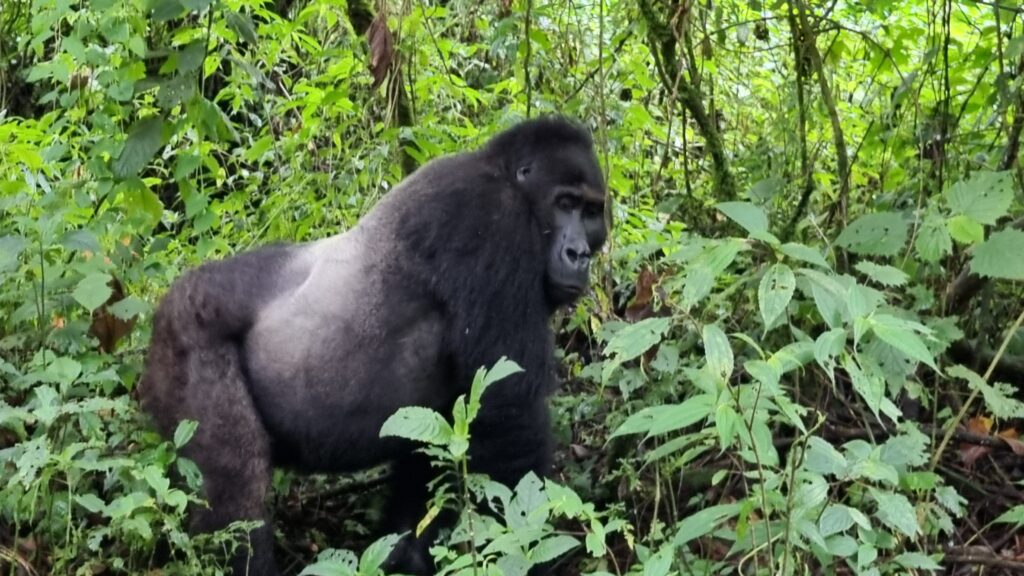
We simply forgot the challenging trek and became totally immersed in the presence of these gentle creatures around us.
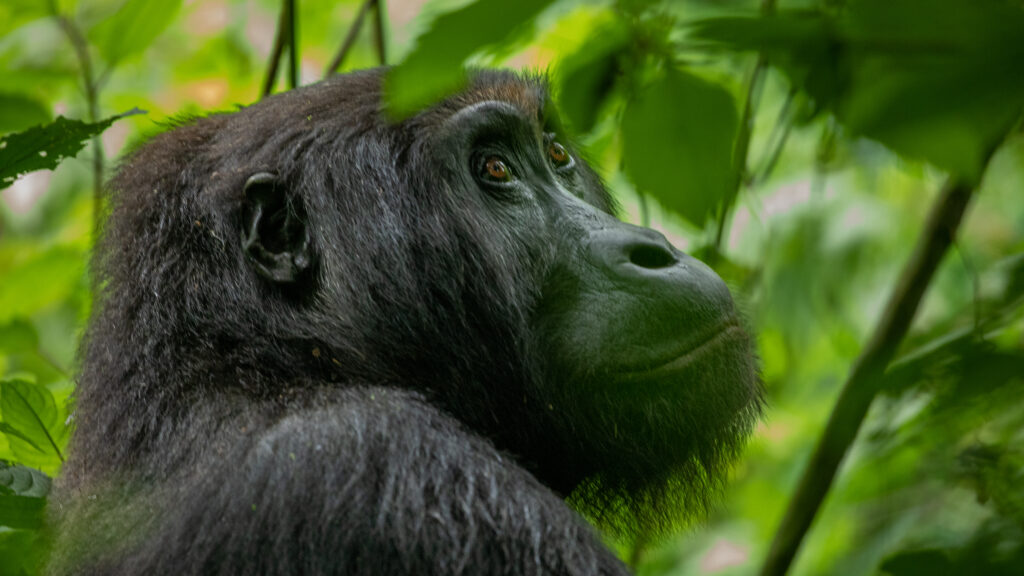
“Certain gorillas are more evolved than certain human beings I know” – Andy Serkis
There were about three adult females and juvenile gorillas, youngest family member being three weeks old female baby, clinging to her mother (image below).
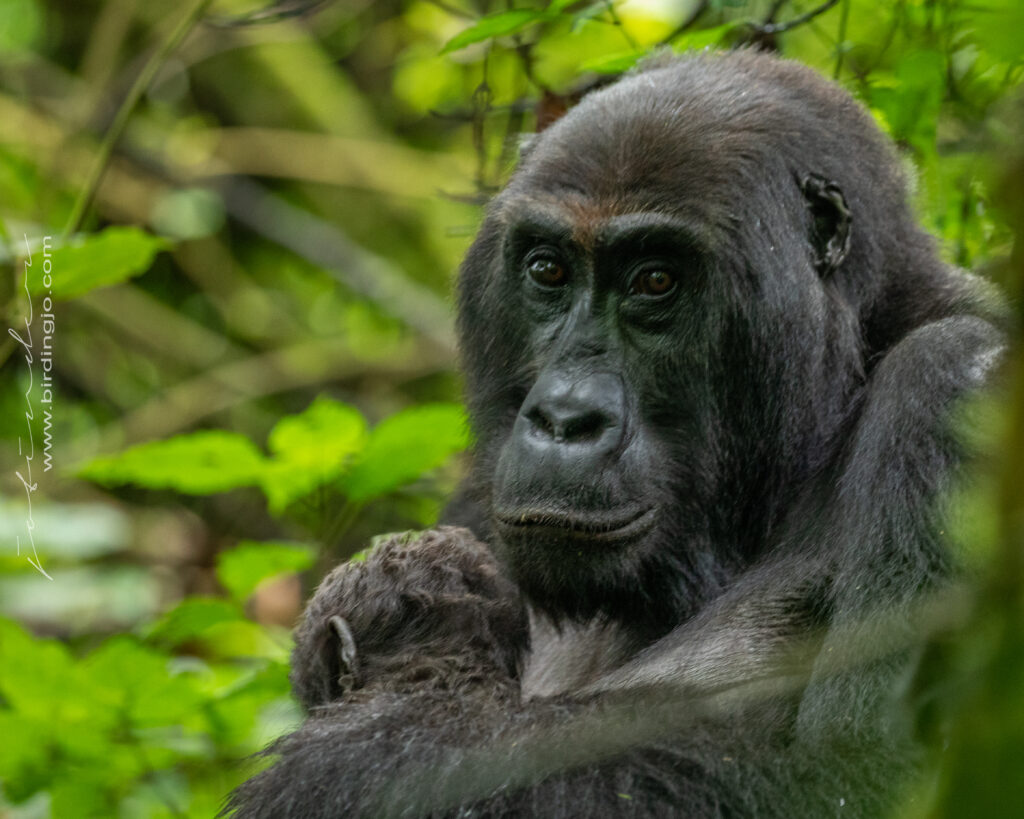
One of the adult females had lost her left hand to a snare set up by poachers, but luckily survived and is doing well with the help of her family members and on her own account,
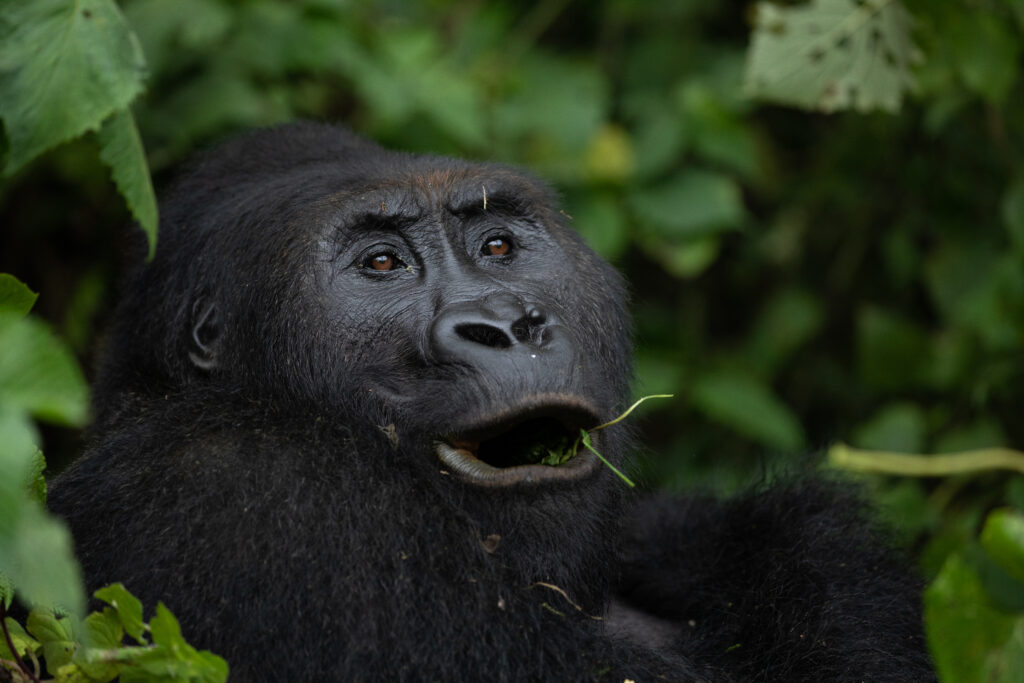
A grown up gorilla roughly eats about 15 to 18 kgs of food per day – hence, eating is one of the prime activity of the day.
The thundering and low level clouds reminded us that one hour had flown by and we must get out of the forest and leave Monene and his family to themselves.
It was indeed a soul stirring experience and I consider myself singularly privileged to have met Monene and his family.
“For in the true nature of things, if we rightly consider, every green tree is far more glorious than if it were made of gold and silver.” – Martin Luther King Jr